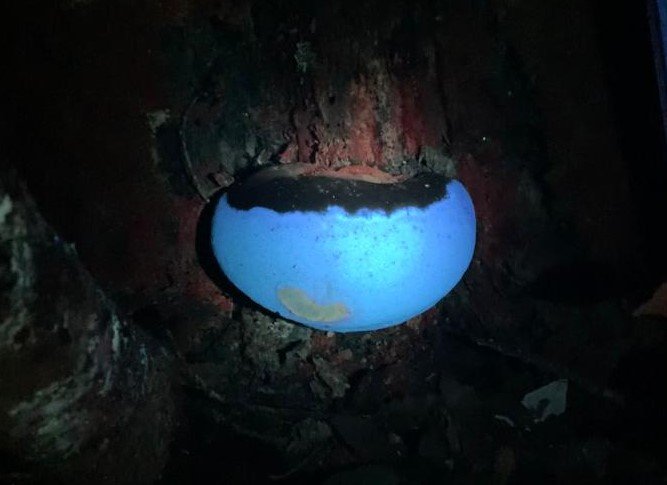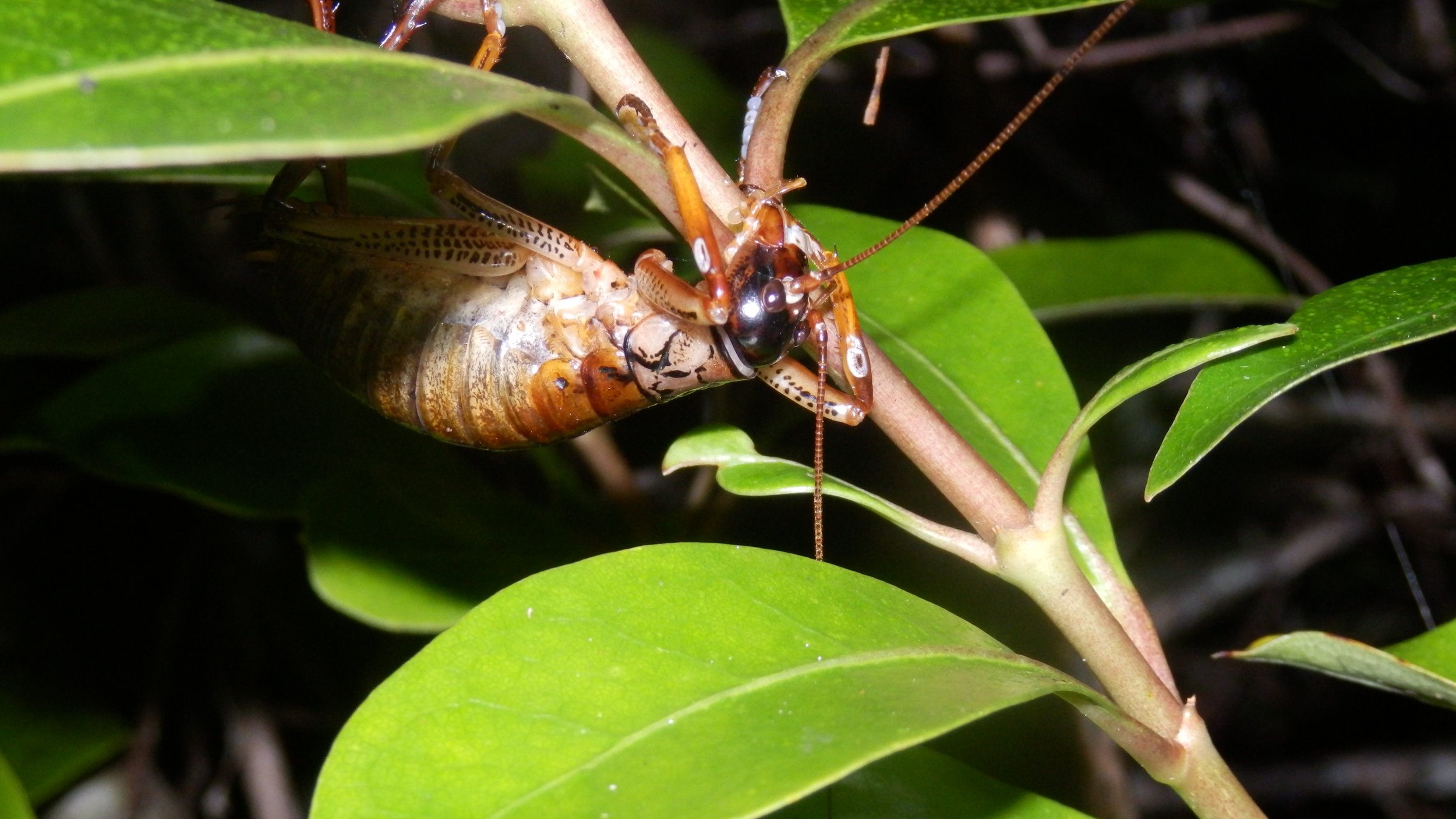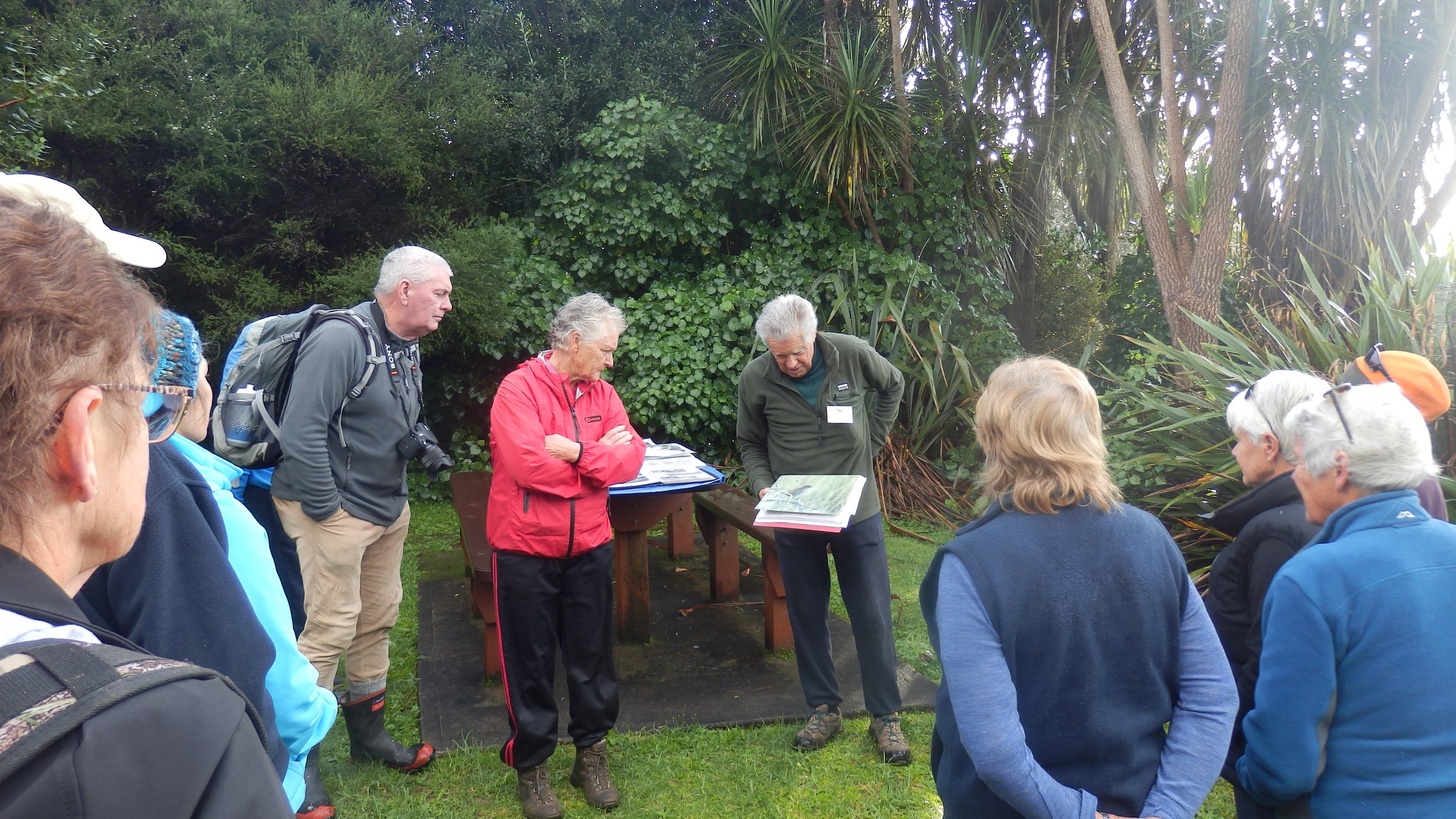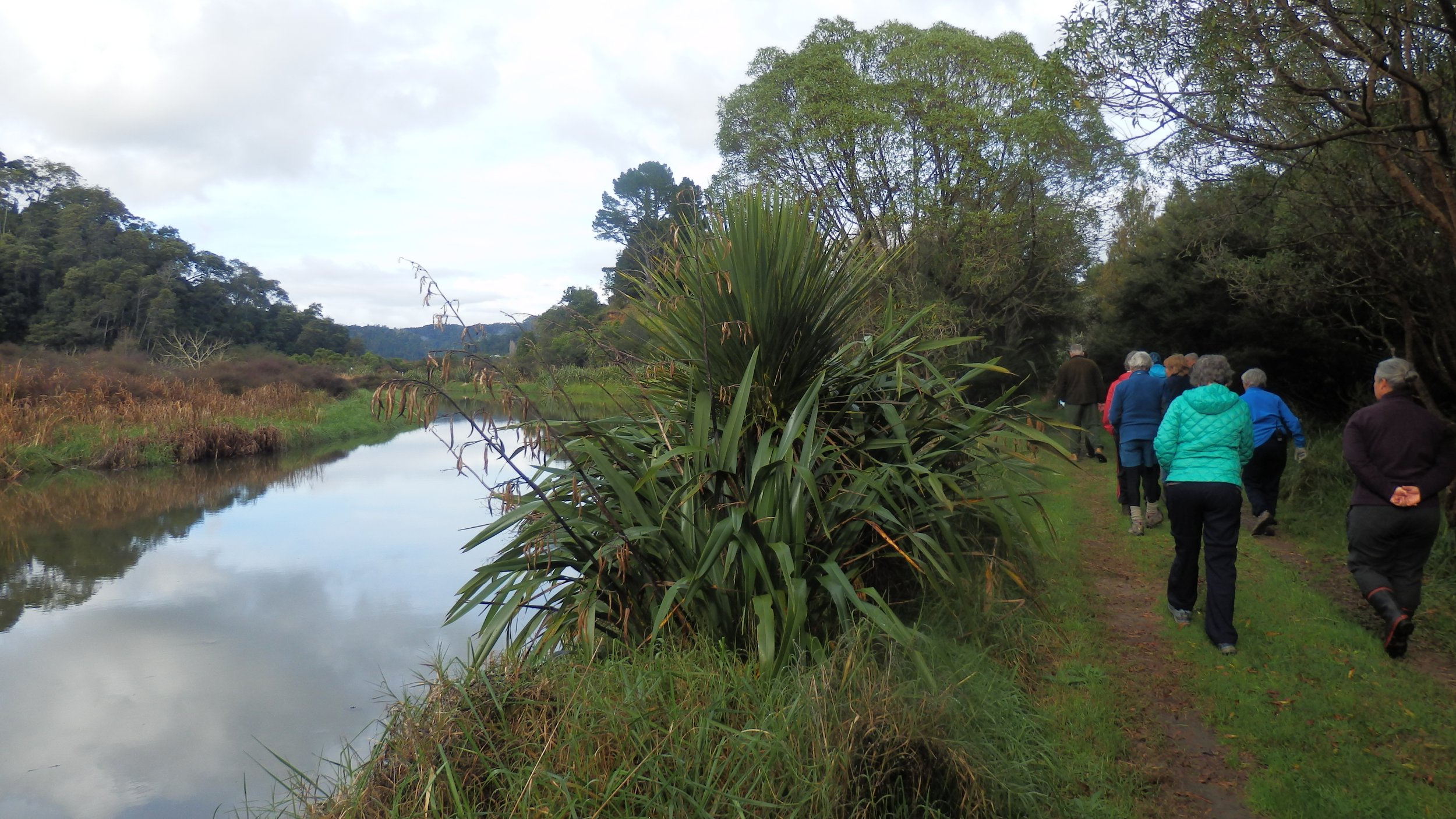Whakatāne Field Trip - June 2022
Dodging The Showers
By Lesley Mochan
Rain was forecast as the Project Tongariro group entered the Ōhope Scenic Reserve. Darkness had descended and the air had a slight winterly chill. Headtorches beamed through the bush, lighting up the forest in a way that made it feel like a new kind of exploration. Joining the group were the hosts from the Whakatāne Kiwi Trust; Wayne, Stewart (aka Russell) and Clive. The night walk was an opportunity to experience the bush from a different perspective, to enter a world of wonderful fluorescent creatures (note – this can be scary if you are averse to spiders). Not only was it a lesson in flora of the area, but it was also a chance to get to know the fauna - lots of wētā, tunnel web spiders, harvestmen, peripatus, glow-in-the-dark fungi and glow worms.
The hosts were extremely knowledgeable in all areas of the bush environs and gave an excellent overview of the Whakatāne Kiwi Trust. They also had eagle eyes that spotted crawlies in crannies of trees or under leaves. To everyone’s delight these and the fungal world are incredibly mind blowing under UV lights. To top the evening off, a kiwi called, and unlike other previous participants, the group was not disappointed with non-sighting of kiwi. The rain arrived just as the group exited the bush.
Rain fell gently through the night. A break in the clouds and a glimmer of sunlight appeared on Saturday morning, the timing perfect for the next visit with Stuart and Margaret Slade from the Nukuhou saltmarsh care group. These amazing, not so young couple, not only developed the project idea, but they also oversaw the development of the Burke Road lookout, the two-kilometre Nukuhou river walk, and pest trapping/weed control around the estuary and the local Uretara Island. Luckily, they have help now, with a base of volunteers protecting this significant salt marsh, and so caring for the resident population of marsh birds; fernbird, banded rail, spotless crane, pūkeko, and bittern. Part of the volunteer’s role is monitoring bird numbers monthly. From the lookout Stuart and Margaret gave an overview of the history and the scope of the project. The unique lookout has an informative interpretation panel, and pottery designs and footprints of the local birds (created by the amazing hosts). Next stop was the home of the hosts and the Cheddar Valley pottery shop (the old Cheddar Valley dairy factory) for a presentation on the project development and a very welcome morning tea.
Once refreshed the group followed the boardwalk/walking track alongside the Nukuhou river which has been replanted with natives including sedges to enhance the environment, but also to stop bittern crossing the road and being killed by traffic. This area is also an important spawning area for whitebait. On return to the pottery shed, it was time to shop. If you haven’t stopped here before, you should, as the pottery and art works by Stuart and Margaret are incredible. This couple is incredible!
Next stop was the Ōhiwa headland for a bite of lunch with Mike O’Sullivan at Bryon’s Beach. The rain returned but luckily the next segment of the field trip was inside. The party was joined by Andrew Glaser and Mithuna Sothieson, a crucial part of the driving force to connect the community and individuals to form the Ōhiwa Headland Sanctuary. An informative presentation by Andrew and Mithuna set the scene of the development of a 400ha predator free sanctuary. Locals, including surrounding farmland owners have set up a network of traps which are monitored regularly alongside the shooting of unwanted pests. The PT group was given the opportunity to try out thermal imaging glasses which are used as part of this process. The locals are also invited to take part in research projects. Aerial maps of the trap network, and results to date were very impressive.
The Ōhiwa headland is a diverse area of wetlands, coastal habitat, farmland, and the Te Mawhai Regional Park. Several species of native fauna including sea birds and marsh birds have set up home here. Revegetation is undertaken as part of the project. A Kiwibank Predator Free Grant was gained when the Trust submitted a video and gained 1001 votes, the most for the competition. Not bad for a small community with around one third permanent residents.
Post presentation and discussion, it was time to stretch the legs, and low and behold the rain had stopped. Most of the group headed up to the lookout area in the Te Mawhai regional park. The climb had the heart pumping, but it was well worth the effort with the breath-taking coastal views from Ōhope in the West sweeping through to the East Coast. A shorter track led down to the Ōhiwa harbour motor camp, past the Ōhiwa harbour library, and back along the beach to the starting point, just as it started to rain.
After a glorious hot water soak at the Ōhope Top 10 motor camp, the team donned more appropriate clothing for dinner at the highly rated Fisherman’s Wharf café restaurant in Ōhope. It was smiling faces all round as the group dined on delicious food and recounted the happenings of the day.
After a very wet night, the rain stopped allowing the group to pack up in dry weather. The last visit was a meeting with the Whakatāne Kiwi Trust, and this was held in the very comfortable board room at the Whakatāne Regional Council building. The hosts were Gaye Payze (Pest Control Team Leader) and Hilary Sheaff (Marketing and Funding coordinator). Once settled in with a cuppa, Gaye and Hilary gave a presentation on the Kiwi Trust covering the project history, main activities including daily kiwi monitoring, pest control methods and results, funding, and the future. The hosts were very keen to share experiences and knowledge and a great discussion ensued.
Protecting kiwi is the key objective, it is estimated there are now over 300 in the three main scenic reserves surrounding the town. This is a significant increase since 1999 when 8 birds were discovered in the Ōhope Scenic Reserve. Kiwi have also been established on the pest free Moutohorā (Whale Island) just offshore from town. The project has been so successful that the move to in-situ management of chicks was undertaken from 2011 with excellent success rates. Residents close to the project regularly encounter kiwi in their gardens. This increase in numbers is a testament to the dedication and effort of the Trust, funders, and volunteers.
To complete the visit to Whakatāne, a few of the group walked down to the river walkway to the Whakatāne heads and notorious bar. A few kiwi were spotted along the way.







